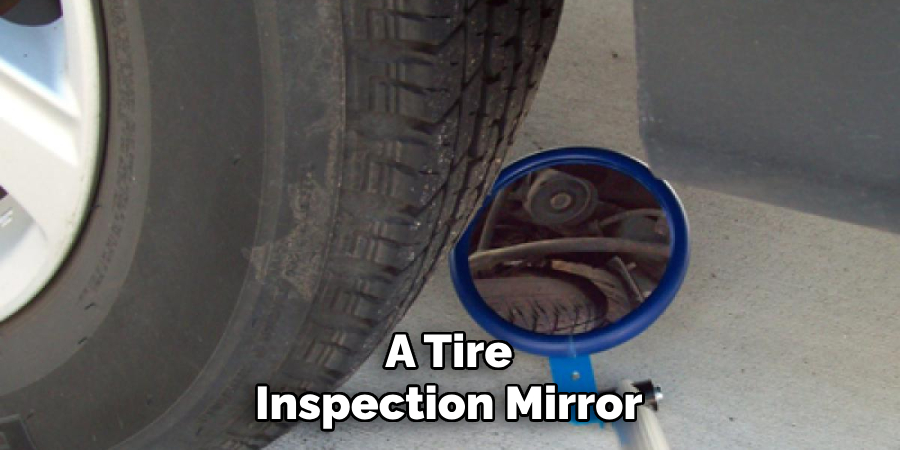How To Fix Small Hole In Sidewall Of Tire

The dreaded hiss. The sinking feeling. A flat tire is never a welcome sight, and a sidewall puncture? Often considered the kiss of death for a tire. For years, conventional wisdom has dictated that sidewall damage, even a small hole, necessitates a complete tire replacement. But is this always the case, and more importantly, are we on the cusp of a future where these situations are handled differently, especially in the context of increasingly sophisticated vehicles?
Traditionally, sidewall repairs have been discouraged due to the inherent stresses the sidewall endures. Unlike the tread, the sidewall flexes constantly, making patched or plugged repairs prone to failure. The risk of a blowout, particularly at high speeds, is simply too great. However, advancements in material science and repair techniques are beginning to challenge this long-held belief. We're not talking about your grandfather's rubber cement and patch kit. We're talking about advanced polymers, self-sealing tire technology, and potentially, even 3D-printed repairs in the not-so-distant future.
Current Options and Limitations
Let's be realistic. Today, officially sanctioned sidewall repair methods for passenger vehicles remain virtually non-existent. Reputable tire shops will almost universally advise against it. The liability and potential safety concerns are simply too significant. However, some specialized repair shops, particularly those dealing with off-road vehicles or heavy equipment (where lower speeds are common), may employ more aggressive repair techniques. These often involve specialized patches reinforced with internal supports and incredibly strong adhesives. These are not DIY solutions and should only be attempted by trained professionals. Furthermore, even these 'fixes' are often considered temporary solutions, intended to get you to a proper replacement as soon as possible.
For electric vehicles (EVs) and hybrid systems, the situation is further complicated. EVs, with their instant torque, can put additional stress on tires, potentially exacerbating the risks associated with a compromised sidewall. Moreover, the integration of tire pressure monitoring systems (TPMS) is becoming increasingly sophisticated, with some systems capable of detecting even minute pressure variations and alerting the driver to potential issues. This added layer of safety underscores the importance of maintaining tire integrity.
The Promise of Future Technologies
Here's where things get interesting. The automotive industry is undergoing a radical transformation, and this extends to tire technology. Several emerging technologies offer potential solutions to the sidewall repair dilemma:
- Self-Sealing Tires: Already available in some vehicles, these tires incorporate a layer of sealant that automatically plugs small punctures. While not a solution for larger sidewall tears, they can effectively handle pinhole leaks and minor damage. The challenge is improving the sealant's effectiveness in larger punctures and ensuring its longevity.
- Run-Flat Tires: Designed to maintain their shape and allow you to drive a limited distance even after a complete loss of air pressure. While not a repair solution per se, run-flat tires provide a crucial safety net and allow you to reach a repair shop without risking a blowout. However, they often come with a harsher ride and can be more expensive.
- Advanced Tire Materials: Research into new tire compounds, including those incorporating graphene and other high-strength materials, promises to create tires that are more resistant to punctures and sidewall damage in the first place. Imagine a tire that can shrug off minor impacts that would cripple a traditional tire.
- 3D-Printed Tire Repairs: This is where things get truly futuristic. Imagine a mobile repair unit equipped with a 3D printer capable of creating a custom-fit patch that perfectly conforms to the shape of the sidewall. Using advanced polymers and sophisticated scanning technology, the repair could be stronger and more durable than traditional methods. While still in its infancy, this technology holds immense potential, especially for specialized vehicles and off-road applications. The key challenge here lies in ensuring the long-term durability and structural integrity of the 3D-printed repair under extreme conditions.
- AI-Powered Tire Monitoring: Integrating advanced sensors and AI algorithms into tires can provide real-time data on tire health, including detecting subtle changes in pressure, temperature, and even sidewall deformation. This predictive maintenance approach could alert drivers to potential problems before they become catastrophic failures.
Challenges and Considerations
Despite these promising advancements, significant challenges remain. The primary hurdle is ensuring the safety and reliability of any sidewall repair. The stakes are simply too high to compromise on safety. Furthermore, standardization is crucial. A patchwork of repair methods with varying degrees of effectiveness will only create confusion and erode consumer confidence.
Cost is another important factor. Advanced repair techniques and materials will likely be more expensive than simply replacing a tire. Consumers will need to be convinced that the added cost is justified by the increased safety and convenience. Finally, environmental considerations must be taken into account. Developing sustainable tire materials and repair processes is essential to minimize the environmental impact of tire manufacturing and disposal.
Ultimately, the future of tire repair, including sidewall damage, hinges on a combination of technological innovation, rigorous testing, and clear industry standards. As vehicles become increasingly sophisticated and autonomous, the role of the tire will become even more critical. Maintaining tire integrity will be paramount to ensuring the safety and reliability of the entire transportation system.
The journey towards a world where a small sidewall hole doesn't automatically condemn an otherwise good tire is undoubtedly a long and complex one. But the potential benefits – reduced waste, increased convenience, and enhanced safety – are well worth the effort. We envision a future where smart tires, coupled with advanced repair technologies, seamlessly integrate into the automotive ecosystem, providing a safer, more efficient, and more sustainable mobility experience for all. A future where a flat tire becomes a minor inconvenience, not a major crisis. A future where our vehicles proactively heal themselves, ensuring a smooth and safe ride, always.
